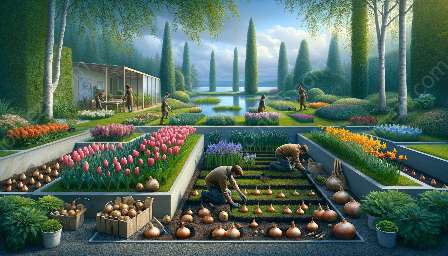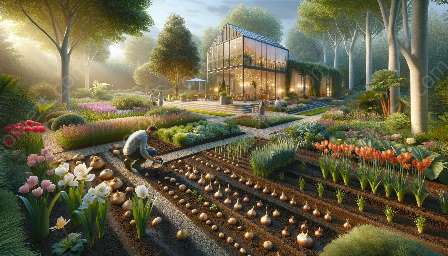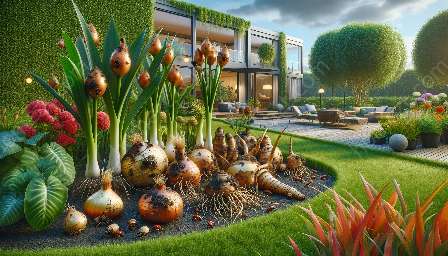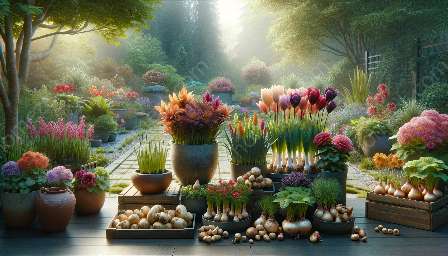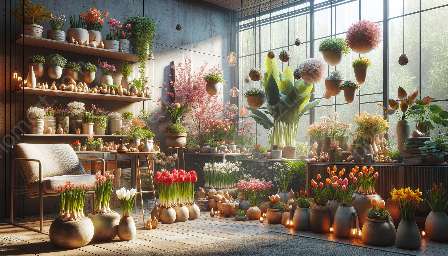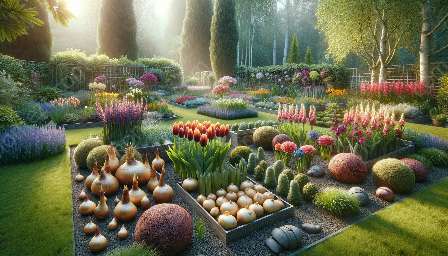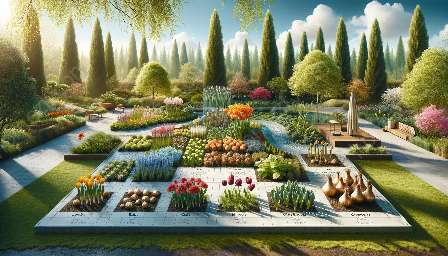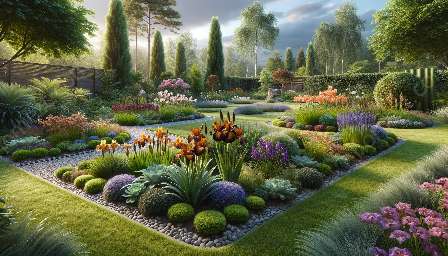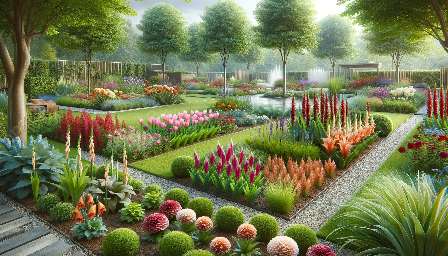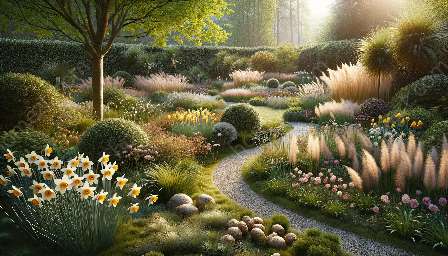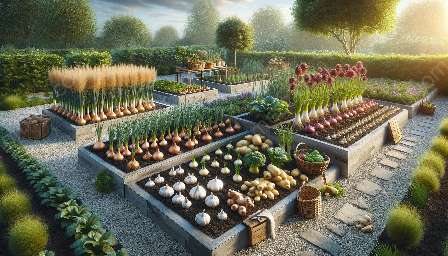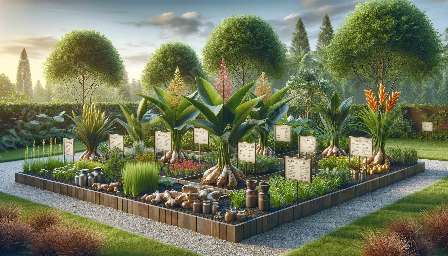Edible bulbs, tubers, and rhizomes offer an intriguing variety of flavors and textures for gardeners looking to grow their own food. In this topic cluster, we will delve into the world of these versatile and nutritious plants, exploring their cultivation, culinary uses, and the many benefits they bring to a home garden.
Understanding Bulbs, Tubers, and Rhizomes
Before we dive into the specifics of each type of plant structure, let's first understand what sets bulbs, tubers, and rhizomes apart and how they contribute to the growth and development of the plants that produce them.
Bulbs
Bulbs are underground storage organs consisting of layers of fleshy scales or modified leaves attached to a basal plate. They store food reserves to support the plant during adverse conditions and provide energy for the next growing season. Examples of edible bulbs include onions, garlic, and shallots.
Tubers
Tubers are enlarged, fleshy, underground stems that function as storage organs. They sprout from the eyes or nodes of the stem and have the ability to produce new plants. Potatoes are a well-known example of tubers that hold a central place in many cuisines around the world.
Rhizomes
Rhizomes are horizontal, underground stems that grow laterally, sending out roots and shoots from nodes. They store nutrients and enable plants to reproduce asexually. Ginger and turmeric are both popular edible rhizomes with diverse culinary and medicinal uses.
Cultivating Edible Bulbs, Tubers, and Rhizomes
When it comes to growing these underground treasures in your garden, there are some essential considerations to keep in mind. Factors such as soil preparation, planting depth, and sunlight requirements play crucial roles in ensuring a successful harvest.
Soil and Site Selection
Most bulbs, tubers, and rhizomes prefer well-drained soil that is rich in organic matter. Select a sunny location for planting to provide the necessary light for photosynthesis and overall plant health.
Planting Depth and Spacing
The planting depth and spacing requirements vary among different types of these plants, so it is important to follow specific guidelines for each variety to optimize growth and yield.
Watering and Maintenance
Consistent moisture levels are important for healthy development, but overwatering can lead to rot and other problems. Additionally, regular maintenance tasks such as weeding, fertilizing, and pest control contribute to the overall vitality of your edible bulb, tuber, and rhizome crops.
Utilizing Edible Bulbs, Tubers, and Rhizomes in the Kitchen
Once you have successfully grown a bountiful harvest of bulbs, tubers, and rhizomes, it's time to explore the culinary delights they have to offer. From comforting stews to vibrant stir-fries, these versatile ingredients can enhance a wide range of dishes with their unique flavors and nutritional benefits.
Creative Cooking Ideas
Experiment with roasting, steaming, frying, and mashing to bring out the distinct qualities of each edible bulb, tuber, and rhizome. Incorporate them into soups, salads, and side dishes for a delightful addition to your meals.
Health Benefits
Many of these plants contain valuable nutrients and compounds that contribute to a well-rounded diet. For example, garlic is renowned for its immune-boosting properties, while sweet potatoes provide a rich source of vitamin A and fiber.
Conclusion
Edible bulbs, tubers, and rhizomes offer a captivating journey for gardeners eager to enrich their gardening experience and culinary creations. By understanding their unique characteristics, mastering their cultivation, and savoring their flavors, you can reap the rewards of these remarkable plants in your own garden.

